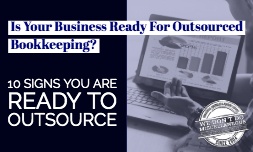In the competitive world of small business, every decision can determine the trajectory of success or failure. One concept that lies at the heart of strategic business decisions but is often overlooked is opportunity cost. It's not just an economic theory; it's a practical metric that every small business owner and entrepreneur should master to make better choices and drive competitive advantage. In this comprehensive guide, we'll unpack what opportunity cost is, how it influences the daily operations of your business, and how smart management of opportunity cost can be facilitated through solutions like Netsuite.
Understanding opportunity cost isn’t just about numbers; it’s an approach to management that underpins sustainable growth and superior performance. Whether it's choosing between marketing channels, investing in technology, or picking the right location for a storefront, grasping opportunity cost puts the power of informed decision-making right at your fingertips.
What is Opportunity Cost and Why Does It Matter for Small Businesses?
Opportunity cost is the value of the next best alternative foregone when a decision is made. In simpler terms, it’s what you potentially lose out on when you choose one decision over another. For small business owners, this means every choice made in allocating time, money, or resources comes at the expense of another potential opportunity.
This concept is incredibly powerful because it enables businesses to make more informed, strategic decisions. It helps to prioritize where to invest resources, ensuring that every decision is aligned with the overall business goals and returns the greatest value. When you understand the opportunity cost, you can evaluate the trade-offs and see which decision is most likely to lead to growth and profit in the long run.
For small business owners, this is particularly important. With limited resources compared to larger corporations, efficient allocation of these resources is a matter of survival. There's no room for error—wasted resources can mean the difference between thriving and barely scraping by.
Opportunity Cost in Daily Decision-Making
Imagine you’re a small business owner who needs to make a decision about expanding your product line or developing a new service. While you may only see the direct costs of these projects, opportunity cost forces you to look beyond that.
For example, by dedicating resources to expanding your product line, you might be giving up the opportunity to innovate and develop a new service that could lead to even greater profits. On the flip side, focusing on a new service could mean missing out on the potential market share increase that a product line expansion might offer.
In this way, opportunity cost influences the core of daily decision-making in areas such as:
- Product Development: Prioritizing the introduction of new products over improving existing ones.
- Marketing: Choosing one marketing campaign over another, knowing the cost could have funded different initiatives.
- Hiring: Deciding to invest in training for current employees instead of hiring new ones.
Understanding and considering opportunity cost helps in making choices that contribute positively to the business’s future, keeping your small business agile and resilient.
Calculating Opportunity Cost in Your Business
Managers in small businesses must find ways to calculate and evaluate opportunity cost for each decision. While in academia, it’s often calculated in terms of the number of a particular item or service, in practical terms, you can identify opportunity cost through various methods:
- Analyzing Direct Costs: Start by analyzing the direct monetary costs of a decision. These might include the cost of raw materials, labor, and operating expenses.
- Assessing Indirect Costs: Some costs are not as obvious, such as lost productivity and the potential cost of operating without a particular asset.
- Measuring Future Benefits: It’s essential to forecast what the potential gains would be from the alternative option and how that relates to the strategic goals of the business.
A common formula for determining opportunity cost is to subtract what you are going to gain from your actual decision from what you would have gained from the best alternative option. Doing so provides a clear picture of the cost associated with your decision.
Netsuite and the Management of Opportunity Cost
Netsuite, a cloud-based business management software, offers a suite of tools that can help to track, measure, and manage opportunity cost-effectively in small businesses. By integrating various aspects of business operations, Netsuite provides real-time insights, streamlining decision-making processes.
The software achieves this in several ways:
- Cross-Functional Integration: Netsuite connects all areas of a business, ensuring that the impact on resources and operations of any decision is reported across the board.
- Automation of Routine Tasks: By automating everyday tasks, Netsuite frees up human capital to focus on more strategic areas, reducing the opportunity cost of administrative time.
- Scenario Planning and Forecasting: Netsuite enables businesses to model different scenarios, giving a clear view of the potential costs and benefits of different decisions.
Making the Most of Opportunity Cost for Sustainable Growth
Small business owners who understand and effectively manage opportunity cost are better equipped to achieve sustainable growth. It’s more than a financial principle—it’s a way to ensure that every choice aligns with the strategic direction of the business.
By using solutions like Netsuite, small businesses can confidently make decisions that maximize value, minimize risk, and keep them ahead of the competition. The small business landscape is dynamic and unforgiving, but with a firm grasp on opportunity cost, you can transform your business into one that doesn’t just survive but thrives.
Navigating opportunity cost requires both the right mindset and the right tools. For entrepreneurs and small business owners, the sooner you integrate this approach into your decision-making processes, the sooner you’ll see the benefits in your bottom line. Don’t let unseen costs hold your business back—embrace the concept of opportunity cost and leverage technology like Netsuite to turn them into realized opportunities.














